|
|
|
|
|
|
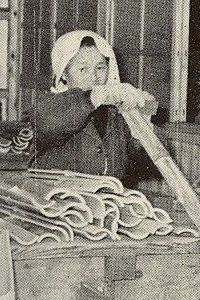
(1) Selection: Pieces of bamboo, which is the main material for slide
rules, undergo quality inspection.
|
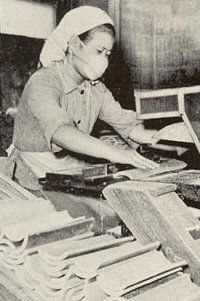
(2) After selection and rough cutting, pieces are formed using circular
saw.
|
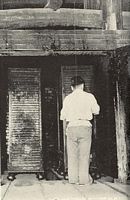
(3) Heating process: Pieces are heated for long period of time at
constant temperature.
|
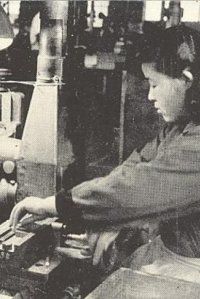
(4) After gluing two or four pieces together, a flat surface is
milled out using this machine.
|
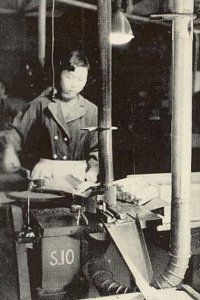
(5) A block is split in half using circular saw, thus making two slide
bars at the same time.
|
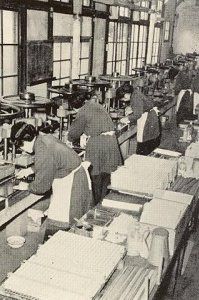
(6) Sheet of Celluloid is glued and pressed. Student rules are not
covered with Celluloid on all sides, but are treated with a hard vanish.
|
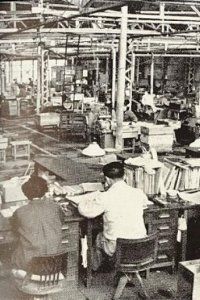
(7) Overview of the factory. Hundreds of special purpose machines
are lined up.
|
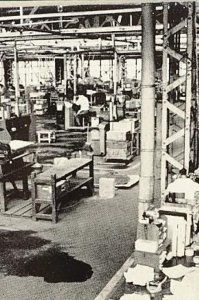
(8) Overview of the factory. This is where slide rules are
manufactured for shipping world wide.
|

(9) Inspection: Checking thickness with micrometer.
|
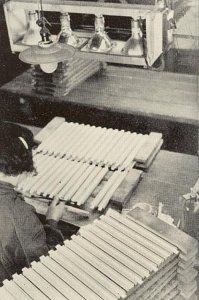
(10) Making grooves: It requires great attention since this is
one of the areas on which accuracy of the slide rule depend.
|
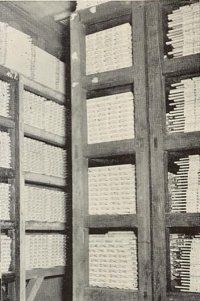
(11) Seasoning: Seasoning gives dimensional stability of
the stock. It is one of the key processes and can not be neglected.
|
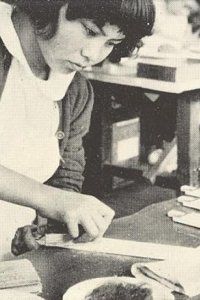
(12) Finish: After red markers are put in, and after inspection,
the surfaces get polished.
|
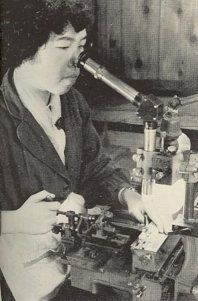
(13) In some rules, there is an index line on the back of the rule.
Since accuracy is required, a line curving machine with
microscope is used.
|
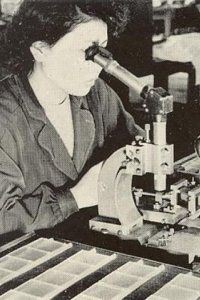
(14) Cursor line is created by first coating surface of cursor glass
with wax and drawing a thin line and finally etching the glass.
|
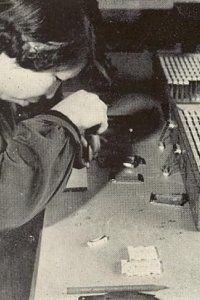
(15) Assembly of two-sided cursors: Two sided cursors are the most
difficult to assemble.
|

















